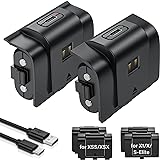Building a high-performance gaming PC presents unique challenges. Many enthusiasts, as seen in the video above, often face a crucial dilemma: choosing the right central processing unit (CPU). It’s easy to assume “more power” always translates to “more frames.” This misconception leads to common mistakes, like considering workstation-grade processors for gaming rigs. The truth is, maximizing gaming performance requires a nuanced understanding of CPU architecture and its synergy with other components. Let’s demystify CPU selection for gaming, ensuring your build delivers unparalleled frame rates and value.
1. The Workstation CPU Misconception: Why Threadripper Isn’t for Gaming
A common pitfall for aspiring PC builders involves overspecifying components. The video highlights this perfectly with the mention of AMD’s Threadripper CPUs. These processors are undeniably powerful. They boast a high core count and massive multi-threaded performance. However, a Threadripper is fundamentally a workstation processor. Its design prioritizes parallel processing for tasks like video editing, 3D rendering, and scientific simulations. Think of it like bringing a heavy-duty cargo truck to a Formula 1 race. The truck is powerful, yes, but its design is ill-suited for the track’s demands.
Gaming workloads typically do not leverage dozens of cores. Instead, they thrive on high single-core performance. A gaming engine often depends more on instruction per cycle (IPC) and raw clock speed. High core counts offer diminishing returns in most modern games. The overhead associated with managing numerous cores can even introduce latency. This means that while a Threadripper might cost significantly more, it won’t deliver superior gaming frame rates. In fact, it often performs worse than a purpose-built gaming CPU.
2. Decoding Gaming CPU Performance: Beyond Just Cores
True gaming performance hinges on several critical CPU metrics. Raw core count is a misleading indicator for gamers. Instead, focus on architectural efficiency and clock speed. A CPU with fewer, faster cores often outperforms one with many slower cores in gaming benchmarks. This is due to how most game engines process tasks. They rely heavily on a few primary threads. These threads need quick access to instructions and data.
Instruction per cycle (IPC) measures a CPU’s efficiency. Higher IPC means more work done per clock cycle. This is a crucial factor in gaming. Paired with high clock speeds, it boosts frame rates. Cache memory also plays a pivotal role. A larger, faster L3 cache significantly reduces latency for game data. This allows the CPU to feed data to the GPU more efficiently. It’s like having a well-stocked pantry right next to the kitchen instead of a distant warehouse.
3. AMD’s Gaming Prowess: The Ryzen X3D Advantage
For those firmly on Team AMD, the Ryzen X3D series stands out. The video briefly mentions a “9800X3D,” likely referring to the highly acclaimed Ryzen 7 7800X3D. This processor is a titan in gaming performance. Its secret weapon is AMD’s innovative 3D V-Cache technology. This vertically stacked L3 cache dramatically increases available cache memory. It provides game engines with an unprecedented amount of quickly accessible data. This minimizes bottlenecks and maximizes frame rates.
The Ryzen 7 7800X3D, for example, often surpasses even higher-core-count, non-X3D CPUs in gaming. Its optimized architecture shines in real-world gaming scenarios. For around $500, it offers exceptional value. It delivers elite-tier gaming performance without the workstation price tag. It’s a prime example of targeted design yielding superior results. This dedicated gaming CPU is a benchmark in its class.
4. Navigating the Intel vs. AMD Landscape for Optimal Gaming
The perennial Intel versus AMD debate continues. Both offer compelling processors for gaming. Intel’s latest Core i series processors are also strong contenders. They often feature high clock speeds and excellent single-core performance. CPUs like the Intel Core i7-14700K or i9-14900K compete fiercely. However, they may draw more power and run hotter. Their value proposition can shift based on specific game titles and resolutions. Intel typically excels in productivity tasks. Their hybrid core architecture offers versatility.
AMD’s X3D series holds a distinct edge in raw gaming FPS. Its unique cache design provides a significant uplift. Your choice often comes down to ecosystem preference. Motherboard features, chipset capabilities, and platform longevity matter. Both platforms offer robust options for high-end builds. Consider your existing hardware and future upgrade path. Personal preference for “Team Intel” or “Team AMD” is a valid factor.
5. Budget and Beyond: Optimizing Your Build for 4K Gaming
A “blank check” scenario, as discussed in the video, allows for top-tier components. Yet, smart spending remains crucial. A powerful gaming CPU like the Ryzen 7 7800X3D forms a solid foundation. However, 4K gaming shifts the primary performance burden. The Graphics Processing Unit (GPU) becomes the dominant factor. A high-end GPU is non-negotiable for smooth 4K experiences. Think of the CPU as the brain and the GPU as the muscle. Both must be strong, but the muscle does the heavy lifting in 4K.
Balance your budget across all components. An overkill CPU paired with a mediocre GPU creates a bottleneck. This limits overall system performance. Invest wisely in a robust motherboard. Choose fast RAM with low latency. A high-wattage, efficient power supply is also essential. Ensure adequate cooling for sustained performance. Every component plays a role in the symphony of a powerful gaming PC. A well-balanced build ensures peak performance for your 4K gaming adventures.









